Plant-based plastic chip used for medicine testing
- Published
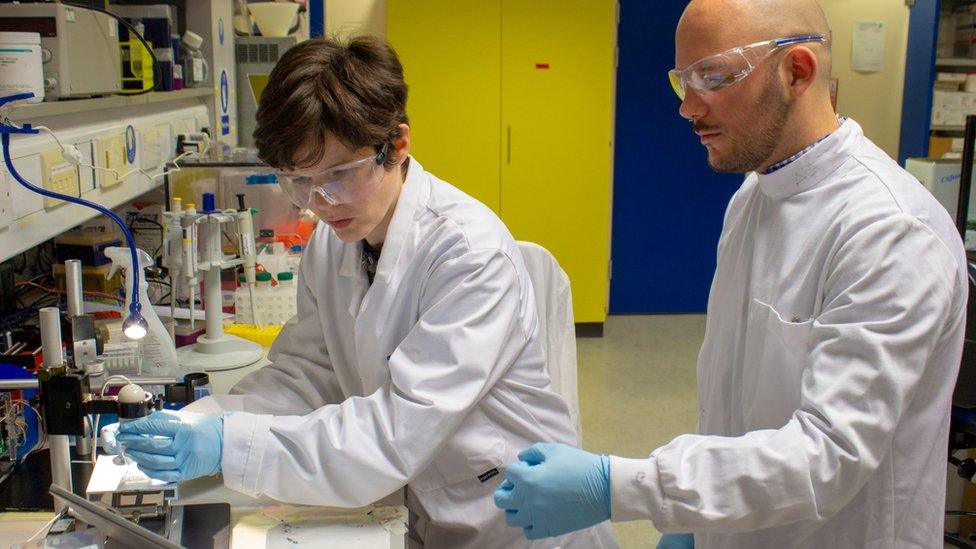
Dr Maiwenn Kersaudy-Kerhoas and Alfredo Ongaro working in the lab with PLA
Researchers at Heriot-Watt University in Edinburgh have developed a technique that uses a sustainable plastic to eliminate waste when testing medicines.
Organ-On-A-Chip is a new technology that uses plastic slides to simulate the workings of a human organ.
Each chip is able to simulate how organs interact with drug treatments, cutting down on animal testing.
The new research has developed a method of using biopolymer plastic, derived from plants, to produce the chips.
The plastic, called Polylactic acid (PLA), is cheap and easy to use in mass production and already has a variety of applications.
It is used to make medical implants designed to biodegrade over time such as pins to support healing bones. The implant slowly dissolves in the patient's body as new bone grows in strength.
It is also the hot, sticky stuff used in many 3D printers.
A more everyday application is in some types of lid for your takeaway coffee.
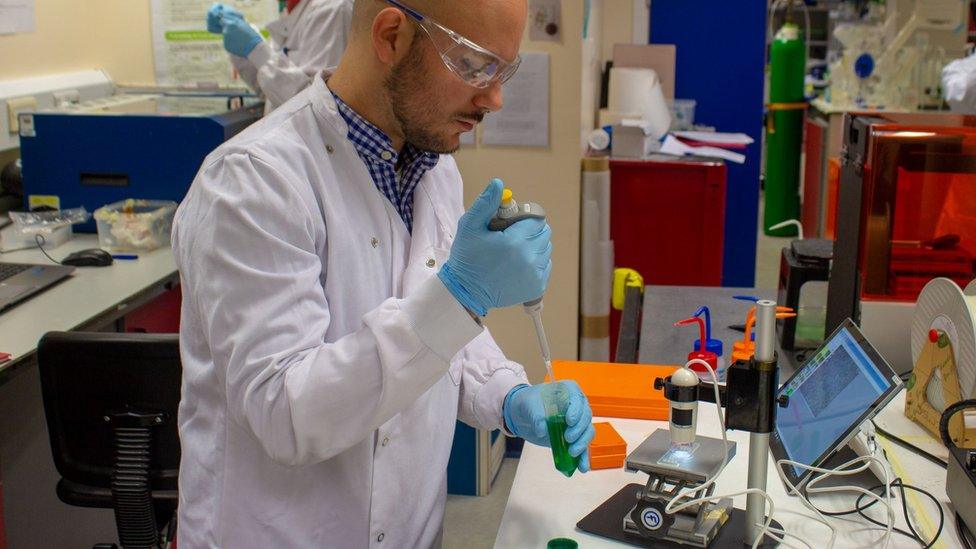
Alfredo Ongaro is a materials scientist at Heriot-Watt
Alfredo Ongaro is holding one such lid. He is a materials scientist and PhD student at Heriot-Watt.
"Polylactic acid is a material derived from starch," he says.
"It's compostable in an industrial setting so it can be chemically recycled to obtain the virgin material again."
The research is producing something more significant than a compostable coffee cup lid: a human organ on a chip.
These chips are tiny devices the size of a microscope slide which mimic how parts of human organs work.
The organ on a chip concept is still in its infancy but already there are catalogues full of different kinds: brain, lung, kidney, skin and others can be simulated.
Each is able to simulate how these organs interact with potential drug treatments.
They mean pharmaceutical companies can develop new drugs faster but without animal testing.
But there are drawbacks. One problem with current organs-on-chips is that the plastic they are made from can interact with some molecules, compromising the test.
Another issue is that the plastic is derived from fossil fuel.
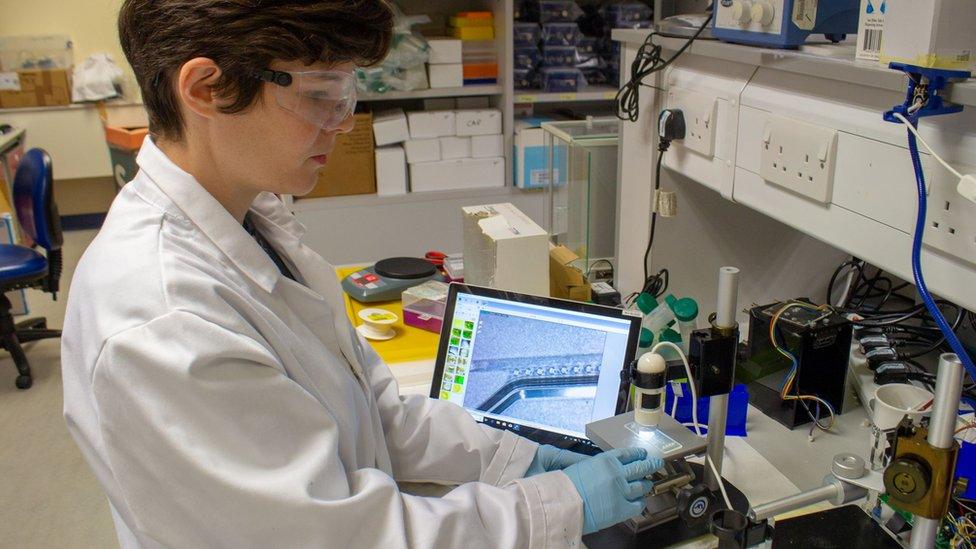
Associate professor of microfluidic engineering Dr Maïwenn Kersaudy-Kerhoas.
This particularly concerns the woman who is leading the Heriot-Watt research, associate professor of microfluidic engineering Dr Maïwenn Kersaudy-Kerhoas.
She said: "As an engineer you typically do not dispose of what you make. But when I started work in the biomedical field, my devices needed to be single use.
"So I realised I was increasing the waste through the very devices I was designing."
Which is where PLA comes in, although when it comes it is as a container full of somewhat unprepossessing cloudy granules.
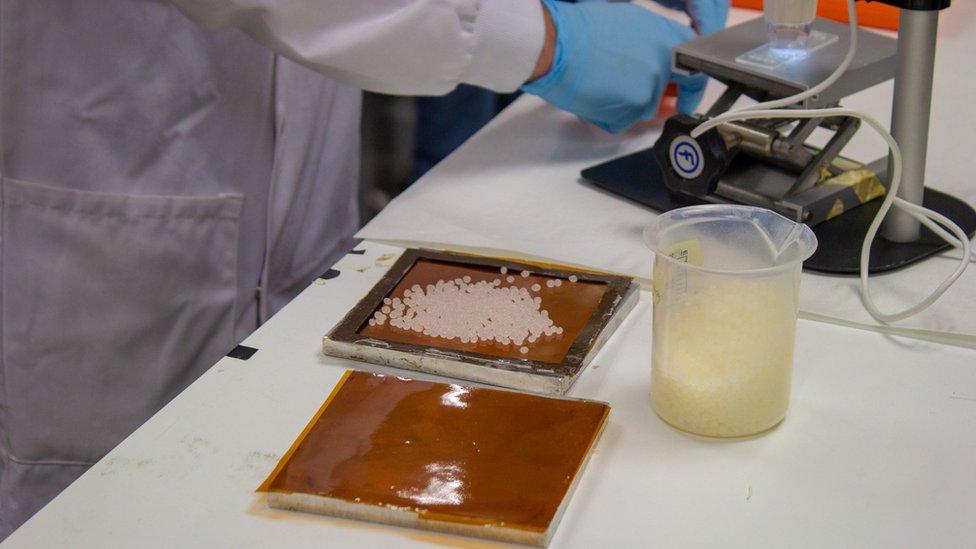
Polylactic Acid arrives as cloudy granules
That may be OK for your takeaway coffee but to observe the chemical interactions the organ on a chip must be see-through.
So in an Edinburgh University laboratory, on the Edinburgh Royal Infirmary campus, the team set out to transform PLA into thin transparent sheets.
Mr Ongaro explains that PLA starts out opaque because it is a crystalline polymer.
His analogy? It's like a dish of pasta with meatballs.
The strands of pasta are the entangled polymers - chains of molecules - and the meatballs are the crystalline components.
"So what I want to do to make the sheets of PLA transparent is to get rid of all the meatballs and have only the entangled pasta."
To do that they take the hot sheets of plant-based plastic and cool them down quickly.
Hey presto: pasta without meatballs, PLA without cloudiness.
The thin plastic sheets are cut with a carbon dioxide laser and heat embossed to create the microscopic channels and tiny chambers in which the cells and molecules will interact.
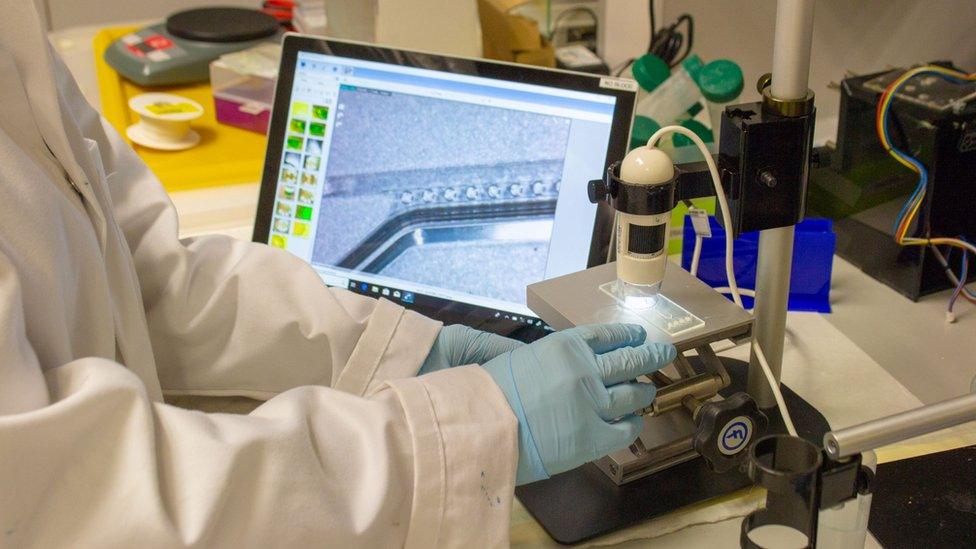
Close-up of a Organ-On-a-Chip under the microscope
Then they are stacked to make the finished chips.
Although beauty is not a consideration they are nevertheless lovely to look at.
More importantly, the prototypes work. Mass production is next.
Dr Kersaudy-Kerhoas says the sustainable chips have already attracted industrial partners. They are not in a catalogue yet but it seems it is only a matter of time.
Edinburgh University's pathology research group have been among the first to express an interest. They are looking at the effects of paracetamol on liver and gut cells.
Heriot-Watt's work is a collaboration with colleagues from the University of Leeds and the University of Rome Tor Vergata, along with industry partners Microfluidic ChipShop and Micronit. It has been released in the open access biology resource BioRxiv.
The project is funded by the UK's Engineering and Physical Sciences Research Council and the Organ-On-A-Chip Technology network and has been published in Heriot-Watt's "year of health".
Current regulations dictate that many organs on chips cannot merely be thrown away - they must be incinerated.
With suitable safeguards and processing this new method could create chips that can be used then recycled back into virgin plastic and used again to improve and save lives.